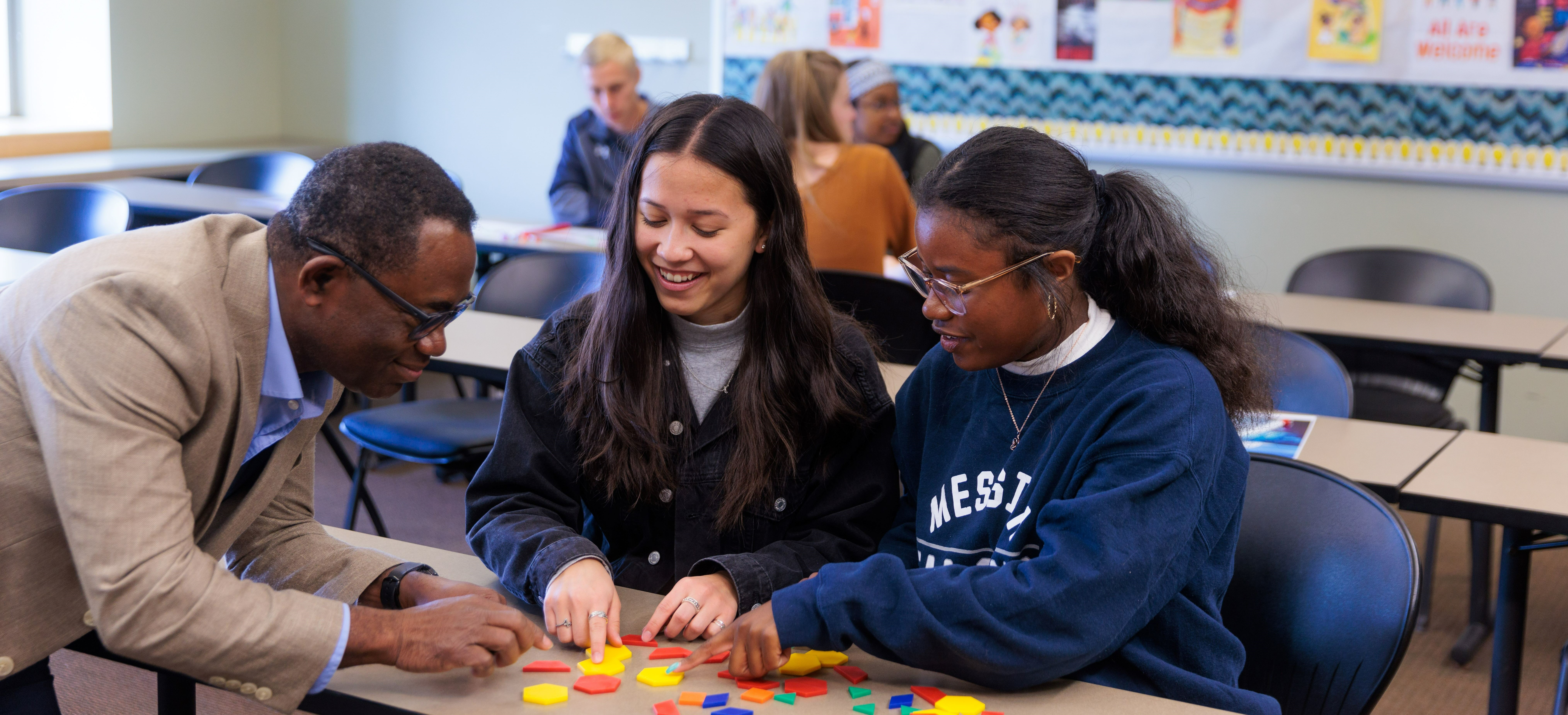
Teaching
Teaching at Messiah is evaluated via multiple inputs, through the lens of six criteria for teaching. The Office of Faculty Development offers multiple avenues of development in each of the criteria for teaching.
a. Content Knowledge
In order to effectively support student mastery of content and skills, faculty must demonstrate appropriate depth and breadth of current subject matter knowledge for each of their courses taught. Faculty must know their content well enough to be able to provide a clear explanation of the appropriate range and complexity of issues in the discipline and respond appropriately to student questions. Strong content knowledge along with an awareness of the content and skills being taught in other courses in the student’s curriculum will also allow the faculty member to support students in making connections across departmental courses and/or disciplines.
b. Faith and Learning
One of the University’s Guiding Education Assumptions is the development of programs that help students “explore the relevance and mutual connectedness of the Christian faith and educational pursuits.” Faculty members can advance that process in a variety of ways: by helping students consider disciplinary assumptions or content in light of the Christian faith; by helping students examine the Christian faith through the lens of an academic discipline; by helping students consider the role/place of faith in a vocational pursuit or context; by helping students consider how Christian values might inform vocational choices, etc. Some of these approaches will be more suitable in some courses than in others. Similarly, the faith and learning emphasis, by departmental design, will be more central to some courses than others.
c. Inclusive Excellence
The University’s Diversity Plan states that the “consideration of inclusive excellence” shall be included in educator evaluation procedures, include Term-Tenure and Promotion policies. With respect to teaching, inclusive excellence can mean any of the following: that faculty members design and deliver courses in ways that increase their students’ intercultural competency; that faculty members design and deliver courses in ways that take into account the diverse backgrounds and learning styles of their students; and/or that faculty members create a climate in the classroom that welcomes and includes students regardless of gender, race, religion, or ethnicity. Whereas the latter two items apply generally to all courses, the first item (increasing students’ intercultural competency) may not apply to some courses.
d. Organizational Supports
Faculty members must be attentive to issues of organization and classroom management that affect student learning. Taken as a whole, each course should be structured in a way that contributes to student achievement of the learning objectives for that course. Clearly written syllabi should be available at the beginning of the semester, and must be written in accordance with the University’s requirements for syllabus content. Expectations for students, including modifications to the course syllabus or daily schedule, should be communicated clearly and in a timely fashion. Individual class periods should be planned and structured in ways to contribute to the achievement of the learning objectives for that particular class period. Finally, work expectations for students (i.e., the amount of work assigned and the difficulty of the work assigned) should be appropriate to the course level, and the grading of student work should be both fair and timely.
e. Student Engagement
Student engagement in academic work can be defined as the student's psychological investment in and effort directed toward learning, understanding, or mastering the knowledge, skills, or crafts that academic work is intended to promote. Levels of engagement must be estimated or inferred from indirect indicators such as the amount of participation in academic work (attendance, portion of tasks completed, amount of time spent on academic work), the intensity of student concentration, the enthusiasm and interest expressed, and the degree of care shown in completing the work. Student engagement is supported by meaningful tasks, opportunity to participate in the learning process, and a clear understanding of the relevance of the content and learning activity. In contrast, “meaningless rituals” and “trivial forms of learning” diminish student engagement (Newman, 1992, p. 13).
f. Student Learning
The most important indicator of teaching effectiveness is student learning. Faculty need to be identifying and implementing assessments in their courses that provide useful information about the extent to which students are achieving the full range of assigned course learning objectives in their courses. These assessments need to be high quality in terms of their relevance to course objectives (validity) and their ability to yield trustworthy (reliable) information about student learning. Because a primary purpose of classroom assessment is to inform and improve instruction, faculty need to demonstrate that they are using assessment results to guide their teaching practices.
A chart connecting the IDEA Diagnostic Feedback form to Messiah’s teaching rubric criteria can be found here.